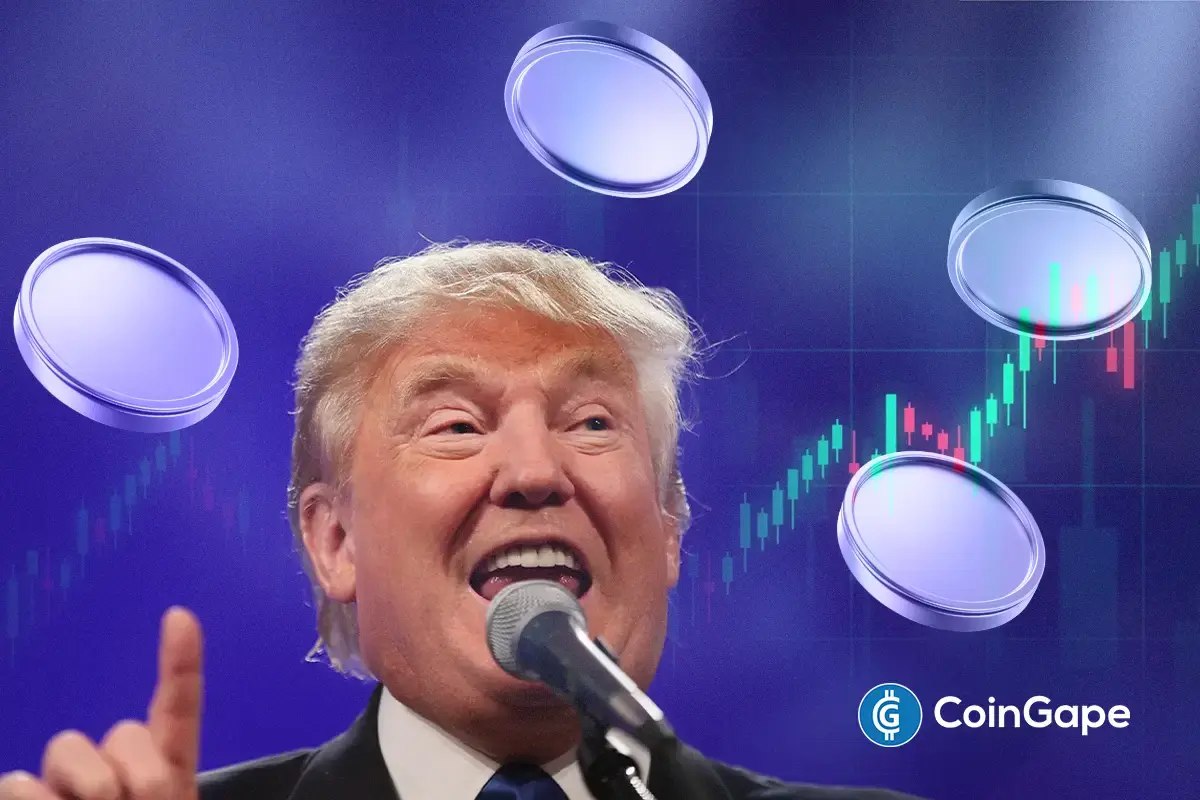Bitcoin
In a Standstill Bitcoin Market, BTC $110K Option Play Emerges as Top Trading Strategy
Published
2 months agoon
By
admin

Bitcoin (BTC) has been relatively listless this month, hunching below $100,000. However, this hasn’t deterred traders from continuing to bet bullishly on the leading cryptocurrency.
This month’s most preferred options play has been buying the $110,000 call expiring on March 28, with buyers paying a cumulative net premium of over $6 million for the bullish exposure, according to the Deribit options flow tracked by Amberdata.
A call option gives the buyer the right but not the obligation to purchase the underlying asset at a predetermined price on or before a specific date. A call buyer is implicitly bullish on the market, while a put buyer is bearish, looking to hedge downside risks.
“Looking at the month-to-date flows for on-screen traders… the buying of March $110K calls has been the most active trade,” Greg Magadini, director of derivatives at Amberdata, said in a note shared with CoinDesk.
Bitcoin has mostly traded within a narrow range of $95,000 to $100,000 this month. The bulls have had some positive developments to chew on, like the continued accumulation by MicroStrategy and Abu Dhabi’s recent reveal of a $436 million investment in the bitcoin ETFs.
However, renewed macroeconomic headwinds, highlighted by last week’s hotter U.S. inflation data and frequent liquidity drains caused by the boom-bust cycles of memecoins and other small-cap tokens, appear to be capping the upside potential.
Over the weekend, a token called LIBRA zoomed to a market cap of over $4 billion, only to erase 90% of that within minutes. Argentina’s President, Xavier Milei, initially promoted the coin late Friday but backtracked in a few hours, causing a controversy that has him facing legal issues in his home country.
“Some bullish headlines hit for BTC last week, but that didn’t materialize into any real spike higher for spot prices,” Magadini said, referring to Abu Dhabi’s investment.
“Combine this news with bearish memecoin market drag (a source of bearish headlines) such as the $Libra drop, pump-fun mania and growing supply of alts [altcoins] and I see this market in stand-still. Together, this reinforces my ‘sideways’ market, lower volatility market thesis,” Magadini added.
Source link
You may like


$90K Breakout Ahead as BTC Decouples from US stocks after China’s Tariffs


Toncoin Takes A Hit With 12% Correction After Failing To Break $4.34, More Pain?


Bitcoin sentiment falls to 2023 low, but ‘risk on’ environment may emerge to spark BTC price rally


Crypto Trader Says Dogecoin Is at a Critical ‘Make-or-Break’ Level, Updates Outlook on Solana and Avalanche


Bitcoin Covenants: CHECKSIGFROMSTACK (BIP 348)


Illinois State Senator’s Bill Seeks to Claw Back $163 Million Lost to Crypto Fraud
Bitcoin
$90K Breakout Ahead as BTC Decouples from US stocks after China’s Tariffs
Published
33 seconds agoon
April 4, 2025By
admin
Bitcoin price rebound 2.3% to reclaim the $84,100 mark on Friday, after China announced retaliatory tariffs on U.S. imports. Will BTC price trajectory decouple from US stocks?
Bitcoin holds key support as China escalates US trade war
On Friday, Bitcoin price rose 2.3% after China imposed a sweeping 34% tariff on U.S. imports, escalating global markets tensions.
This latest development intensifies fears of a prolonged trade war, sending shockwaves across traditional financial markets, prompting investors to reassess their portfolio.
Notably, China’s retaliatory measure comes just 48 hours after former President Donald Trump had introduced fresh tariffs on Chinese imports along with multiple other nations.


Drawing insights from the CoinMarketCap chart above, BTC price briefly dipped to $81,600 before rebounding above the $84,100 mark, at press time.
While BTC’s price action remains under pressure, BTC appears to be attracting more inflows, as investor look diversify from potential impact of China’s tariffs on US firms revenues.
Bitcoin’s divergence from U.S. stocks signals decoupling trend
Despite the negative sentiment surrounding the escalating trade war, Bitcoin has maintained its footing above $82,000 throughout the week. This stability contrasts with the S&P 500, which has recorded a 6% decline over the same period, closing at lower levels each day.


The divergence between Bitcoin and traditional equities suggests a potential shift in investor behavior. As U.S. stock markets falter under the bearish overhang of the ongoing trade war, Bitcoin’s relative resilience could position it as a safer store of value.
If Bitcoin price can form a steady support base around the $81,000 level, it could beging attracting hedge demand from investors looking to mitigate exposure to stock market volatility.
Bitcoin price forecast: $85K breakout ahead of $81,000 support holds
As China’s retaliatory measures introduces fresh volatility, Bitcoin price forecast signals now indicate potential for a breakout above $85,000. However, this breakout remains contingent on BTC maintaining critical support at $81,000.
The daily Bollinger Bands indicate a tightening range, with BTC currently trading near $84,009.24. The lower band at $80,927.39 reinforces strong demand at this level, while the upper band at $88,104.90 signals a possible bullish breakout if momentum strengthens.


The Nasdaq 100’s weakness further supports Bitcoin’s resilience. With major tech stocks like Apple and Cadence Design Systems (CDNS) posting losses, BTC’s ability to hold firm above $82,000 suggests it could be decoupling from U.S. equities.
As investors look to avoid the impact of China’s tarrifs on US firms, many investors could lean into BTC to mitigate the downside risks, potentially driving up Bitcoin prices towards $85,000.
The Relative Strength Index (RSI) stands at 47.22, reflecting neutral sentiment but trending slightly upward. A move above 50 would confirm renewed bullish momentum. Meanwhile, trading volume remains moderate at 30,140 BTC, suggesting accumulation rather than aggressive selling. If buying pressure intensifies, BTC could challenge resistance at $85,000, with a decisive break opening the door toward $88,000.
Conversely, a failure to sustain $81,000 could trigger $793 million in liquidations, amplifying downward pressure. However, given Bitcoin’s historical strength at this level, buyers remain well-positioned to defend it.
Frequently Asked Questions (FAQs)
China’s tariffs create economic uncertainty, pushing investors toward Bitcoin as a hedge, potentially increasing demand and price stability.
Bitcoin has held above $82,000 despite the S&P 500’s decline, suggesting increased investor interest as a non-correlated asset.
The $81,000 support is critical. A breakout above $85,000 could signal bullish momentum, while a drop risks mass liquidations.
ibrahim
Crypto analyst covering derivatives markets, macro trends, technical analysis, and DeFi. His works feature in-depth market insights, price forecasts, and institutional-grade research on digital assets.
Disclaimer: The presented content may include the personal opinion of the author and is subject to market condition. Do your market research before investing in cryptocurrencies. The author or the publication does not hold any responsibility for your personal financial loss.
Source link
Altcoin
Here’s why Bitcoin, altcoins, and the stock market continued falling on Friday
Published
6 hours agoon
April 4, 2025By
admin

Bitcoin, altcoins, and the stock market continued their downward trend on Friday as the trade war between the U.S. and China escalated.
Bitcoin (BTC) price dropped to $82,000, erasing some of the gains made during the Asian and European markets. Ethereum (ETH) dropped below $1,800, while the market cap of all coins fell to $2.64 trillion.
The stock market’s performance was even worse as futures tied to the Dow Jones, S&P 500, and Nasdaq 100 indices plunged by over 3%. This means that these blue-chip indices have all moved into a correction.
Trade war escalates
Bitcoin, altcoins, and equities declined after China announced its retaliatory measures against the U.S. In a statement, Beijing said it would impose a 34% tariff on all goods imported from the U.S.
In addition, China will restrict exports of certain rare earth minerals, halt sorghum imports from U.S. companies, and add 11 American firms to its unreliable entity list.
These measures mark the most significant response to Donald Trump’s Liberation Day tariffs. Other countries, especially those in Europe, have called for negotiations to prevent the trade war from expanding.
Trump and senior officials have warned that the U.S. will deliver reciprocal tariffs on any country that retaliates. They’ve urged trading partners to lower their tariffs and non-tariff barriers instead.
Therefore, Bitcoin, altcoins, and the stock market are falling as these actions lead to higher odds of a recession. Polymarket data shows that traders have boosted their recession odds to 56%. Companies like Goldman Sachs and PIMCO have also boosted their recession odds.
These fears have pushed market sentiment into extreme territory. The CNN Money Fear and Greed Index dropped to 6, the lowest reading since the onset of the COVID-19 pandemic.
Investor pessimism intensified after billionaire and former Bond King Bill Gross warned against buying the dip. He said:
“Investors should not try to ‘catch a falling knife. This is an epic economic and market event similar to 1971 and the end of the gold standard except with immediate negative consequences.”
Bitcoin, altcoins, and the stock market fall after NFP data
Markets also weakened after the U.S. released the latest nonfarm payrolls (NFP) report. The data showed that unemployment rose to 4.2% in March, up from 4.1% in February.
The economy added 228,000 jobs, beating analysts’ median forecast of 137,000. However, the manufacturing sector, which Trump aims to protect with his tariff policy, created just 1,000 jobs.
These figures will likely have minimal impact on the Federal Reserve, which remains focused on inflation and GDP growth.
Meanwhile, the bond market is signaling expectations of lower interest rates. The 10-year Treasury yield fell to 3.89%, while the 30-year and 2-year yields declined to 4.38% and 3.5%, respectively. If the Fed cuts rates, it would likely be bullish for Bitcoin, altcoins, and the broader stock market.
Source link
Bitcoin
Bitcoin Falls Back to $83K, XRP, SOL, DOGE Surrender Gains as China Announces 34% Tariffs on All U.S. Goods
Published
8 hours agoon
April 4, 2025By
admin

Risk sentiment worsened during the European hours Friday after China announced retaliatory tariffs on all goods, responding to Trump’s Wednesday decision to boost the overall levy on Chinese goods to 54%.
Bitcoin, the leading cryptocurrency by market value, fell by $1,600 to $83,000, erasing the early rise to $84,600, CoinDesk data shows. Other tokens like XRP, ETH, SOL and DOGE also reversed early gains to trade largely flat on the day.
Meanwhile, futures tied to the S&P 500 and Nasdaq fell over 2% amid escalating global trade tensions.
“China’s response is not only negative for the U.S. but it is also impacting the global outlook,” ForexLive’s analyst Justin Low wrote in a market update.
Source link

$90K Breakout Ahead as BTC Decouples from US stocks after China’s Tariffs

Toncoin Takes A Hit With 12% Correction After Failing To Break $4.34, More Pain?

Bitcoin sentiment falls to 2023 low, but ‘risk on’ environment may emerge to spark BTC price rally

Crypto Trader Says Dogecoin Is at a Critical ‘Make-or-Break’ Level, Updates Outlook on Solana and Avalanche

Bitcoin Covenants: CHECKSIGFROMSTACK (BIP 348)

Illinois State Senator’s Bill Seeks to Claw Back $163 Million Lost to Crypto Fraud

Here’s why Bitcoin, altcoins, and the stock market continued falling on Friday

Bitcoin Falls Back to $83K, XRP, SOL, DOGE Surrender Gains as China Announces 34% Tariffs on All U.S. Goods

BTC Holds $84K, ATOM & FIL Become Top Gainers

Analysts Eye 20% Breakout If This Level Is Reclaimed

AI and blockchain — A match made in heaven

‘We’re Still in Danger Territory’: Crypto Analyst Unveils Bearish Setup for Bitcoin – Here Are His Targets

Bitcoin Startups Raised Nearly $1.2 Billion

Illinois to End Lawsuit Against Coinbase Over Staking Program: Report

Justin Sun takes legal action against FDUSD issuer

Arthur Hayes, Murad’s Prediction For Meme Coins, AI & DeFi Coins For 2025

Expert Sees Bitcoin Dipping To $50K While Bullish Signs Persist

Aptos Leverages Chainlink To Enhance Scalability and Data Access

Bitcoin Could Rally to $80,000 on the Eve of US Elections

Sonic Now ‘Golden Standard’ of Layer-2s After Scaling Transactions to 16,000+ per Second, Says Andre Cronje

Institutional Investors Go All In on Crypto as 57% Plan to Boost Allocations as Bull Run Heats Up, Sygnum Survey Reveals

Crypto’s Big Trump Gamble Is Risky

Ripple-SEC Case Ends, But These 3 Rivals Could Jump 500x

Has The Bitcoin Price Already Peaked?

A16z-backed Espresso announces mainnet launch of core product

Xmas Altcoin Rally Insights by BNM Agent I

Blockchain groups challenge new broker reporting rule

The Future of Bitcoin: Scaling, Institutional Adoption, and Strategic Reserves with Rich Rines

Trump’s Coin Is About As Revolutionary As OneCoin

Is $200,000 a Realistic Bitcoin Price Target for This Cycle?
Trending

 24/7 Cryptocurrency News5 months ago
24/7 Cryptocurrency News5 months agoArthur Hayes, Murad’s Prediction For Meme Coins, AI & DeFi Coins For 2025

 Bitcoin3 months ago
Bitcoin3 months agoExpert Sees Bitcoin Dipping To $50K While Bullish Signs Persist

 24/7 Cryptocurrency News3 months ago
24/7 Cryptocurrency News3 months agoAptos Leverages Chainlink To Enhance Scalability and Data Access

 Bitcoin5 months ago
Bitcoin5 months agoBitcoin Could Rally to $80,000 on the Eve of US Elections

 Altcoins2 months ago
Altcoins2 months agoSonic Now ‘Golden Standard’ of Layer-2s After Scaling Transactions to 16,000+ per Second, Says Andre Cronje

 Bitcoin5 months ago
Bitcoin5 months agoInstitutional Investors Go All In on Crypto as 57% Plan to Boost Allocations as Bull Run Heats Up, Sygnum Survey Reveals

 Opinion5 months ago
Opinion5 months agoCrypto’s Big Trump Gamble Is Risky

 Price analysis5 months ago
Price analysis5 months agoRipple-SEC Case Ends, But These 3 Rivals Could Jump 500x



✓ Share: